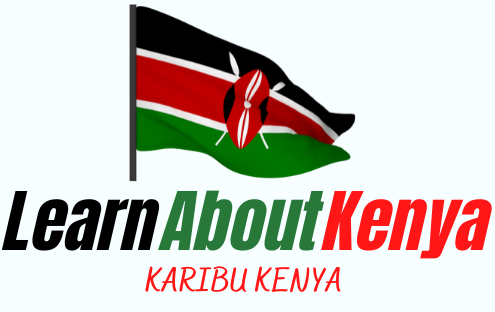What Are The Main Languages Spoken In Kenya?
Kenya is a diverse country that boasts stunning landscapes and vibrant cultures. When it comes to communication, language plays a crucial role in connecting its people. In this article, we will explore the main languages spoken in Kenya, giving you a closer look at the rich linguistic tapestry that makes this East African nation so unique. Whether you’re curious about Swahili, English, or some of the indigenous languages, this article will provide you with a fascinating insight into the linguistic diversity of Kenya.
Official Languages
Swahili
English
Kenya, a diverse and vibrant country in East Africa, is renowned for its rich linguistic landscape. The official languages of Kenya are Swahili and English, both of which play crucial roles in the country’s communication, culture, and national identity.
Indigenous Languages
Kikuyu
Luhya
Luo
Kalenjin
Kamba
Meru
Kisii
Mijikenda
Turkana
Maasai
In addition to the official languages, Kenya boasts a wide array of indigenous languages that reflect the cultural richness and linguistic diversity of its people. These indigenous languages include Kikuyu, Luhya, Luo, Kalenjin, Kamba, Meru, Kisii, Mijikenda, Turkana, and Maasai. Each of these languages carries a unique significance and contributes to the mosaic of Kenya’s cultural heritage.
Swahili
History and Importance
Swahili, also known as Kiswahili, holds remarkable historical and cultural significance in Kenya. It originated as a language of trade along the East African coast and gradually evolved into a lingua franca for the region. Swahili’s roots can be traced back to the interactions between Arab traders and Bantu communities, resulting in a fusion of both cultures and languages. This blend birthed Swahili, which emerged as a language of commerce and communication.
Today, Swahili holds paramount importance in Kenya as a national language widely spoken and understood by the majority of the population. Its position as an official language facilitates unity and enables interethnic communication, breaking down barriers and fostering a sense of national identity.
Usage and Popularity
Swahili is the most widely spoken language in Kenya, with approximately 40 million people using it as their first or second language. It is not only the lingua franca of Kenya but also holds official status throughout the East African Community. Swahili’s versatility has contributed to its popularity, extending beyond national borders and becoming a prominent language of African literature, music, and film. Moreover, its simplicity and accessibility make it a language that is relatively easy to learn, further bolstering its popularity among both native speakers and foreigners.
Significance in National Identity
Swahili plays a vital role in shaping Kenya’s national identity. Its widespread usage across ethnicities and regions is a testament to its unifying power. Swahili acts as a common thread that weaves together the diverse tapestry of Kenyan culture, fostering mutual understanding, respect, and cooperation among its citizens. This national language serves as a symbol of collective heritage, promoting inclusivity and strengthening the sense of pride in being Kenyan.
English
Historical Background
English, as an official language in Kenya, has a rich historical background intertwined with colonialism. During the British colonial era, English was introduced and rapidly adopted as the language of administration, education, and commerce. The presence of British settlers and missionaries played a significant role in establishing English as a prominent language in Kenya.
Adoption and Usage
English has persisted as a lingua franca in Kenya even after gaining independence from British rule in 1963. Its adoption was primarily due to the continuity of English in government, education, and various professional sectors. Today, English is widely used in formal settings, such as business, law, academia, and official documentation. Proficiency in English is highly valued and regarded as a skill that opens doors to job opportunities and advancements in various fields.
Role in Education and Government
English plays a crucial role in Kenya’s education system, serving as the medium of instruction in schools and universities. Proficiency in English is seen as essential for academic success and access to higher education. Moreover, government institutions conduct official business in English, ensuring effective communication across different regions and with the international community. English proficiency is often a prerequisite for bureaucratic positions, emphasizing its role in governance and public administration.
Kikuyu
Number of Speakers
Kikuyu, a Bantu language, is one of the most widely spoken indigenous languages in Kenya. It is predominantly spoken by the Kikuyu ethnic community, who are the largest ethnic group in the country. With over 8 million speakers, Kikuyu holds significant influence in the linguistic landscape of Kenya.
Geographical Distribution
The Kikuyu community mainly inhabits the Central Province of Kenya, which includes cities like Nairobi, Nyeri, and Thika. However, due to migration and urbanization, Kikuyu speakers can be found in various parts of the country and even abroad, contributing to the dispersion and preservation of the Kikuyu language and culture.
Cultural Significance
Kikuyu language and culture are deeply intertwined, serving as a cornerstone of the Kikuyu cultural identity. The language carries a rich oral tradition, with proverbs, songs, and folklore playing a crucial role in passing down ancestral knowledge and values. Kikuyu cultural practices, such as ceremonies, rituals, and storytelling, are often conducted in the Kikuyu language, reinforcing its significance in preserving and celebrating the community’s heritage.
Luhya
Number of Speakers
Luhya is another prominent indigenous language spoken in Kenya. It is predominantly used by the Luhya community, which comprises several sub-ethnic groups. With over 5 million speakers, Luhya ranks among the major indigenous languages in Kenya.
Geographical Distribution
The Luhya community is primarily concentrated in the western part of Kenya, particularly in the former Western Province. Cities such as Kakamega, Bungoma, and Busia are notable for their significant Luhya populations. However, as with other indigenous languages, Luhya speakers can be found across the country, especially due to migration and urbanization.
Cultural Significance
Luhya language and culture are inseparable, acting as vital components of the Luhya community’s identity. The language is a medium through which cultural values, traditions, and history are transmitted to younger generations. Luhya cultural practices, such as circumcision ceremonies and traditional dances, often accompany the Luhya language, reinforcing its importance in maintaining and strengthening the community’s cultural heritage.
Luo
Number of Speakers
Luo, a Nilotic language, is predominantly spoken by the Luo community in Kenya. With over 4 million speakers, Luo is a significant indigenous language in the country.
Geographical Distribution
The Luo community mainly resides in the western part of Kenya, particularly around Lake Victoria. Cities such as Kisumu, Homa Bay, and Siaya are centers of Luo culture and language. However, Luo speakers can also be found in other regions, both within Kenya and in neighboring countries.
Cultural Significance
The Luo language is a vital aspect of Luo culture, expressing the community’s identity and traditions. Luo proverbs, songs, and folktales play a prominent role in conveying ancestral wisdom and maintaining the cultural heritage of the community. Traditional Luo ceremonies, such as weddings and funerals, are conducted in the Luo language, reinforcing its significance in preserving and celebrating the community’s customs and values.
Kalenjin
Number of Speakers
Kalenjin, a Nilotic language, is primarily spoken by the Kalenjin community in Kenya. With over 4 million speakers, Kalenjin is a significant indigenous language in the country.
Geographical Distribution
The Kalenjin community predominantly resides in the Rift Valley region of Kenya. Towns such as Eldoret, Nakuru, and Iten are notable for their sizable Kalenjin populations. However, due to migration and socioeconomic factors, Kalenjin speakers can also be found in other parts of the country.
Cultural Significance
The Kalenjin language serves as a powerful tool for preserving and promoting the community’s cultural heritage. It is through the Kalenjin language that oral traditions, such as myths, folklore, and moral teachings, are passed down from one generation to another. Cultural practices, including music, dance, and sports, are often accompanied by the Kalenjin language, reinforcing its significance in celebrating and preserving the Kalenjin cultural identity.
Kamba
Number of Speakers
Kamba is a Bantu language predominantly spoken by the Kamba community in Kenya. With over 3 million speakers, Kamba is one of the major indigenous languages in the country.
Geographical Distribution
The Kamba community primarily resides in the Eastern region of Kenya, encompassing towns such as Machakos, Kitui, and Makueni. However, due to migration and urbanization, Kamba speakers can also be found in other parts of the country, contributing to the dispersion and preservation of the Kamba language and culture.
Cultural Significance
The Kamba language is deeply intertwined with the cultural fabric of the Kamba community, serving as an essential tool for preserving and transmitting their heritage. Kamba proverbs, folk songs, and storytelling play a significant role in conveying traditional knowledge and moral teachings. Kamba cultural celebrations, such as the circumcision ceremony (Mukusya) and dance festivals (Ngoma), are conducted in the Kamba language, reinforcing its importance in honoring and preserving the Kamba cultural identity.
Meru
Number of Speakers
Meru, a Bantu language, is primarily spoken by the Meru community in Kenya. With over 1 million speakers, Meru holds significant influence in the linguistic landscape of the country.
Geographical Distribution
The Meru community primarily resides in the Eastern region of Kenya, particularly in Meru County. Cities such as Meru, Chuka, and Maua are centers of Meru culture and language. However, Meru speakers can also be found in other parts of the country, both due to migration and urbanization.
Cultural Significance
The Meru language serves as a vital component of the Meru community’s cultural heritage, acting as a medium through which traditions, customs, and values are passed down. Meru folklore, proverbs, and songs play a significant role in preserving the community’s history and wisdom. Cultural ceremonies and rituals, such as the circumcision ceremony (Iruma) and harvest festivals (Kithito), often revolve around the Meru language, reinforcing its importance in maintaining and celebrating the Meru cultural identity.
In conclusion, Kenya’s linguistic landscape is a tapestry of official and indigenous languages that reflect the country’s diverse cultural heritage. Swahili and English serve as the official languages, facilitating communication and promoting national unity. Meanwhile, indigenous languages such as Kikuyu, Luhya, Luo, Kalenjin, Kamba, Meru, Kisii, Mijikenda, Turkana, and Maasai hold significant cultural and historical importance. These languages serve as vehicles for preserving and celebrating the unique identities of various ethnic communities, conveying traditional knowledge, and strengthening the sense of pride in being Kenyan.







